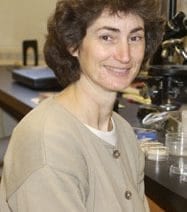Press Room
Elephants learn to imitate sounds that are not typical of their species, the first known example after humans of vocal learning in a non-primate terrestrial mammal.
A small autonomous underwater vehicle, or AUV, named Spray was launched yesterday about 12 miles southeast of Bermuda. The two-meter-(6-foot)-long orange glider with a four-foot wingspan will slowly make its way northwest, crossing the Gulf Stream and reaching the continental…
Predicting when large earthquakes might occur may be a step closer to reality, thanks to a new study of undersea earthquakes in the eastern Pacific Ocean. The study, reported in today??A’s Nature, is the first to suggest that small seismic shocks or foreshocks preceding a major earthquake can be used in some cases to predict the main tremors.
Scientists from WHOI and USGS Menlo Park will be assessing future earthquake risk in Algeria and training Algerian researchers under a new two-year project funded by the Office of Foreign Disaster Assistance (OFDA) of the United States Agency for International…
WHOI researchers and colleagues from other laboratories will be able to look at mud from the seafloor in a new way, thanks to a high-tech scanner capable of making rapid, non-destructive, ultra-high-resolution analyses of sediment cores from the seafloor around…
In a lush stand of mangroves on the Pacific coast of Panama, a Woods Hole Oceanographic Institution (WHOI) biologist is looking for encrusting barnacles and oysters, common on the roots of mangroves in one stand but nearly absent in a…
CONTACTS Monte Basgall (919) 681-8057 monte.basgall@duke.edu Shelley Dawicki (508) 289-2270 sdawicki@whoi.edu DURHAM, N.C. — A team of geologists from Duke University and Woods Hole Oceanographic Institution has discovered a grinding, coordinated ballet of crustal “microplates” unfolding below the equatorial east…
Chemicals found in whale blubber, and initially suspected of being from industrial sources, have turned out to be naturally occurring, raising questions about the accumulation of both natural and industrial compounds in marine life.
A dozen major earthquakes of magnitude 7.0 or greater have occurred in the Caribbean near Puerto Rico, the U.S. Virgin Islands and the island of Hispaniola, shared by Haiti and the Dominican Republic, in the past 500 years, and several…
A physical oceanographer known for his theories of wind driven ocean circulation and the fluid dynamics of the oceans will receive the 2005 Sverdrup Gold Medal from the American Meteorological Society (AMS), the nation’s leading professional society for scientists in the atmospheric and related sciences, in ceremonies January 12 at the AMS annual meeting in San Diego.
The Institution will celebrate its 75th anniversary in 2005 with a series of activities ranging from an Anything-But-a-Boat Regatta in August to a public open house and science symposium in September. Speakers from 15 institutions and agencies will address six…
Scientists from the Chilean Navy Hydrographic and Oceanographic Office (SHOA), in cooperation with the Woods Hole Oceanographic Institution (WHOI), deployed a SHOA tsunami warning buoy off Northern Chile in the Pacific in December 2004 just prior to the devastating Indian…
With decades of experience designing, building and operating marine observing systems of many types around the world, the Institution has established a Center for Ocean, Seafloor and Marine Observing Systems (COSMOS) to provide administrative, management and systems engineering oversight of…
Woods Hole, MA–In a study published in the December 24, 2004 issue of the journal Science, Michael Moore and Greg Early at the Woods Hole Oceanographic Institution (WHOI) have documented bone lesions in the rib and chevron bones of sperm…
A Gulf Stream and ocean circulation expert has been named second director of the Ocean and Climate Change Institute at Woods Hole Oceanographic Institution (WHOI). Physical Oceanographer Terrence Joyce will assume his new position on January 1, 2005. He succeeds…
Imagine a lake three times the size of the present-day Lake Ontario breaking through a dam and flooding down the Hudson River Valley past New York City and into the North Atlantic. The results would be catastrophic if it happened…
Woods Hole Oceanographic Institution (WHOI) President and Director Robert Gagosian has been appointed to the U.S. National Commission for the United Nations Educational, Scientific and Cultural Organization (UNESCO). The National Commission, re-established by the U.S. Department of State on October…
A Woods Hole Oceanographic Institution (WHOI) biologist has been honored for her contributions to graduate education with the Institution’s first Arnold B. Arons Award for Excellence in Teaching, Advising and Mentoring. Dr. Lauren Mullineaux, a senior scientist in the Biology…
Five researchers have been recognized by the Woods Hole Oceanographic Institution (WHOI) for their contributions to ocean sciences research and education. All will receive funding provided by the endowed awards to support their research over periods of three to five…
Three new deep-sea hydrothermal vent fields were discovered in September 2004 in the Lau Basin in the western Pacific between Tonga, Fiji and Samoa and were geologically and biologically mapped by the Autonomous Benthic Explorer (ABE), one of WHOI’s autonomous…



